O’Regan will make his NHL debut tonight vs. New Jersey. The American-born forward was a fifth round pick (No.138) in 2012 and has picked up 11 points (5G / 6A) in his first 11 career AHL games. He will replace Kevin LaBanc in the lineup on Monday.

O’Regan will make his NHL debut tonight vs. New Jersey. The American-born forward was a fifth round pick (No.138) in 2012 and has picked up 11 points (5G / 6A) in his first 11 career AHL games. He will replace Kevin LaBanc in the lineup on Monday.

Honka, 20, was the 14th overall pick in 2014 and tonight he will make his NHL debut. Honka has 12 points (3G / 9A) in 16 games with Texas this season. Honka will skate on the top-pair with Dan Hamhuis and will replace John Klingberg on the top power-play unit.
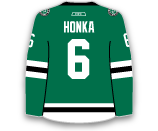
Hannikainen did not appear in a game during his call-up and will return to Cleveland because Seth Jones is returning from IR and a roster spot needed to be opened up. Hannikainen has eight points (5G / 8A) in 14 games with Cleveland.
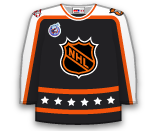
Hammond cleared waivers last week and has been sent to Binghamton because the Senators are going to roll with Craig Anderson and Mike Condon as their duo in net. Hammond had a 4.50 GAA and .793 SV% in two games this season.
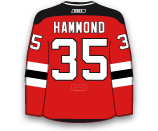
Condra has spent the entire year with Syracuse, registering three goals and six assists (nine points) in 13 AHL games. The Lightning are a little banged up right now, so Condra could draw into the lineup on Monday.
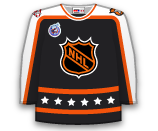
Murphy has been a healthy scratch for the last four games and has only appeared in four games with the Hurricanes this season. The Hurricanes are reportedly shopping Murphy, but he’ll head to the AHL for a maximum of 14 days.
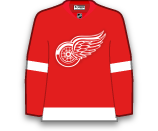
Guentzel, 22, was a third round pick (77th overall) of the Penguins’ in 2013. The American born forward has collected 17 points (7G / 10A) in 16 games with Wilkes-Barre/Scranton so far this season and will likely make his NHL debut on Monday after Chris Kunitz was moved to IR.

Kase, 21, has on assist in two games with the Ducks this season and will appear in his third NHL game on Sunday. Kase has picked up seven points (3G / 4A) in nine games with San Diego.

Dvorak has bounced around from the NHL and AHL so far this season, but has yet to appear in a game with Tucson (AHL). In 12 games with the Coyotes, he has one goal and four assists (five points) and will draw back onto the second line tonight with Brad Richardson (leg) out indefinitely.

Andrighetto was a healthy scratch on Friday and failed to record a point in four games with the Canadiens. The 23-year-old returns to St. John’s, where he has 11 points (5G /6A) in 10 games this season.
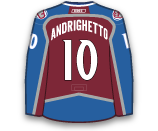
Schneider, 26, has been great in the AHL this season, picking up 17 points (7G / 10A) in 13 games with Rochester. Schneider has one assist in two games with the Sabres and tonight he is expected to appear in his third NHL game of the season.
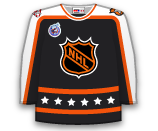
O’Reilly, 30, has picked up 18 points (3G / 15A) in 15 games with Rochester this season. With some Sabres forwards banged up, including his brother Ryan, Cal has been recalled and is expected to make his season debut on Saturday. O’Reilly had seven points (3G / 4A) in 20 games with Buffalo last season.

Kindl has registered seven points (1G / 6A) in 13 games with Springfield this season. He has been called-up to serve as the Panthers’ seventh defenseman with Alex Petrovic out. Kindl had two assists in 19 games with the Panthers a season ago.
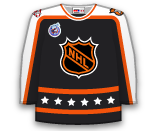
Lazar has spent the start of the year in Binghamton, where he collected three goals and one assist in 13 games. Lazar’s return to the NHL means the Senators are concerned that they could be without Mike Hoffman and Bobby Ryan on Saturday.


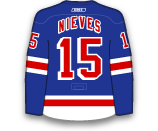
Eriksson Ek, 19, had two goals and three assists (five points) in nine games with Minnesota. Before burning the first year of his entry-level contract, they’ve sent him back to Sweden. The former first round pick (No.20 overall in 2015) had 15 points (9G / 6A) in 41 games with Farjestad last season.

McCormick, 24, has picked up three goals in 10 games with Binghamton this season. He failed to record a point in his only game with Ottawa and has four points (2G / 2A) in 21 career NHL games. McCormick is skating with Matt Puempel and Chris Neil this morning because Mike Hoffman is not on the ice for the morning skate.

Fedun, 28, has picked up two goals and 10 assists (12 points) in 14 games with Rochester. With Casey Nelson going down to Rochester, Fedun comes up and is expected to make his Sabres debut on Thursday. He has seven points (2G / 5A) in 12 career NHL games.

Bertuzzi, 21, has picked up three goals and three assists (six points) in 10 games with Grand Rapids, but failed to record a point in three games with the Red Wings. With Darren Helm out and Thomas Vanek not ready until Sunday, Bertuzzi will get another chance on Friday vs. the Capitals.
